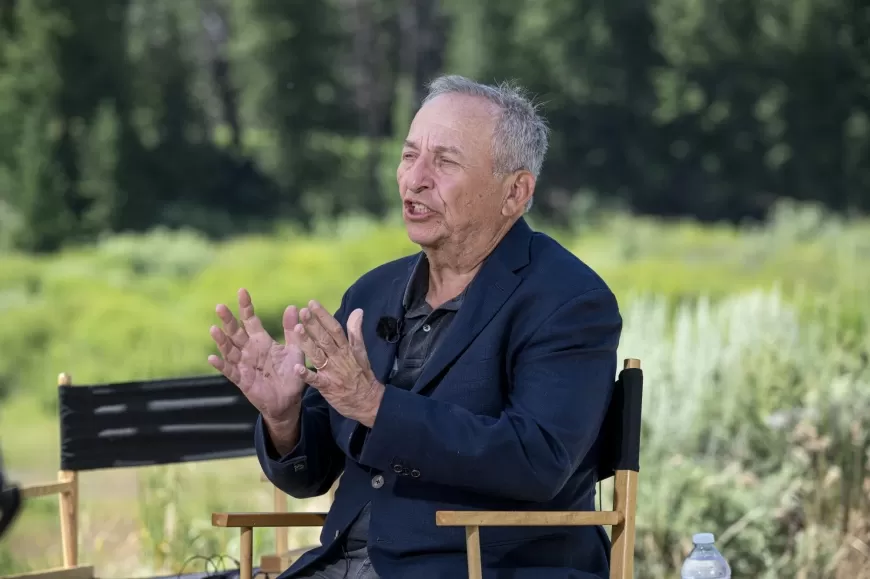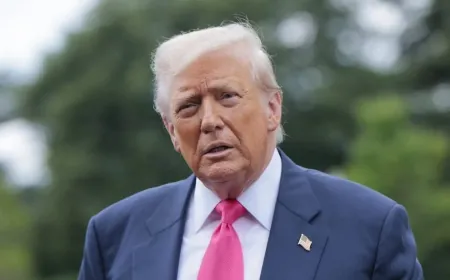Federal Reserve Faces Intensifying Debate Over Interest Rates
Federal Reserve's debate over interest rates, with differing expert opinions and economic indicators impacting financial markets and personal finances.

The Federal Reserve is facing a debate over whether to change interest rates. Experts have different opinions, with some predicting rate cuts and others suggesting no change. This decision could affect how much we pay on loans and how our investments perform. Economic data, like growth numbers and inflation rates, are also playing a role in this discussion.
Expert Opinions Vary on Federal Reserve Policy
Economists and policymakers are engaged in a spirited debate over the Federal Reserve's next moves regarding interest rates, reflecting divergent views on economic conditions and future prospects. Larry Summers, a prominent economist, has raised eyebrows with his suggestion that there's a chance the Fed might increase rates, despite widespread expectations of potential cuts.
Internal Discord at the Fed
The Federal Reserve itself is not immune to these differences in opinion. At a recent meeting, internal projections revealed a split among officials. While some anticipate one rate cut in the near future, others are more cautious, predicting either two cuts or none at all.
Economic Outlook: Mixed Signals
Recent economic data presents a nuanced outlook. The first quarter's annualized growth rate of 1.4% underscores modest economic expansion, yet projections for the second quarter suggest a more robust 3.1% growth, as indicated by the Atlanta Fed's forecasting tool. Moreover, May's surge in nonfarm payrolls by 272,000 jobs signals a healthy labor market.
Inflation Dynamics: A Complex Landscape
Inflation metrics add further complexity. The core Consumer Price Index, excluding volatile food and energy prices, recorded a 3.4% increase over the past 12 months, marking a significant decline from previous years. However, the Federal Reserve's preferred gauge, the Personal Consumption Expenditures Index, remains stubbornly above the 2% target at 2.7% for the 12 months through April.
Federal Reserve Chair's Stance
Federal Reserve Chair Jerome Powell has maintained a cautious stance amidst these mixed signals. Powell emphasized the strength of the labor market and progress towards achieving price stability as key factors supporting the current policy stance. He noted that while recent Consumer Price Index data show positive developments, they are not sufficient to warrant immediate rate cuts.
Expert Insights and Predictions
Looking ahead, Kathy Bostjancic, Chief Economist at Nationwide Mutual Insurance, anticipates potential rate cuts starting as early as September, contingent upon further economic data. In contrast, Mohamed El-Erian, Chief Economic Adviser to Allianz, criticizes the Fed's cautious approach, warning that delayed rate cuts could exacerbate economic slowdown.
Future Meetings and Policy Decisions
The Federal Reserve's upcoming meetings in July, September, and November are expected to be critical in shaping future monetary policy decisions. These meetings will provide opportunities for further assessment of economic data and potential adjustments to interest rates.
Impact on Financial Markets and Personal Finances
The ongoing debate over interest rates has significant implications for financial markets and personal finances. Higher interest rates may translate into increased returns on savings and investments but could also lead to higher costs for mortgages, auto loans, credit cards, and other forms of borrowing.
As stakeholders await the Federal Reserve's next steps, all eyes will be on forthcoming economic indicators and the evolving discourse among policymakers and economists. The decision-making process will undoubtedly influence market expectations and economic conditions moving forward.
Also Read: Why U.S. Financial Markets Are Stable Despite High Fed Rates































































